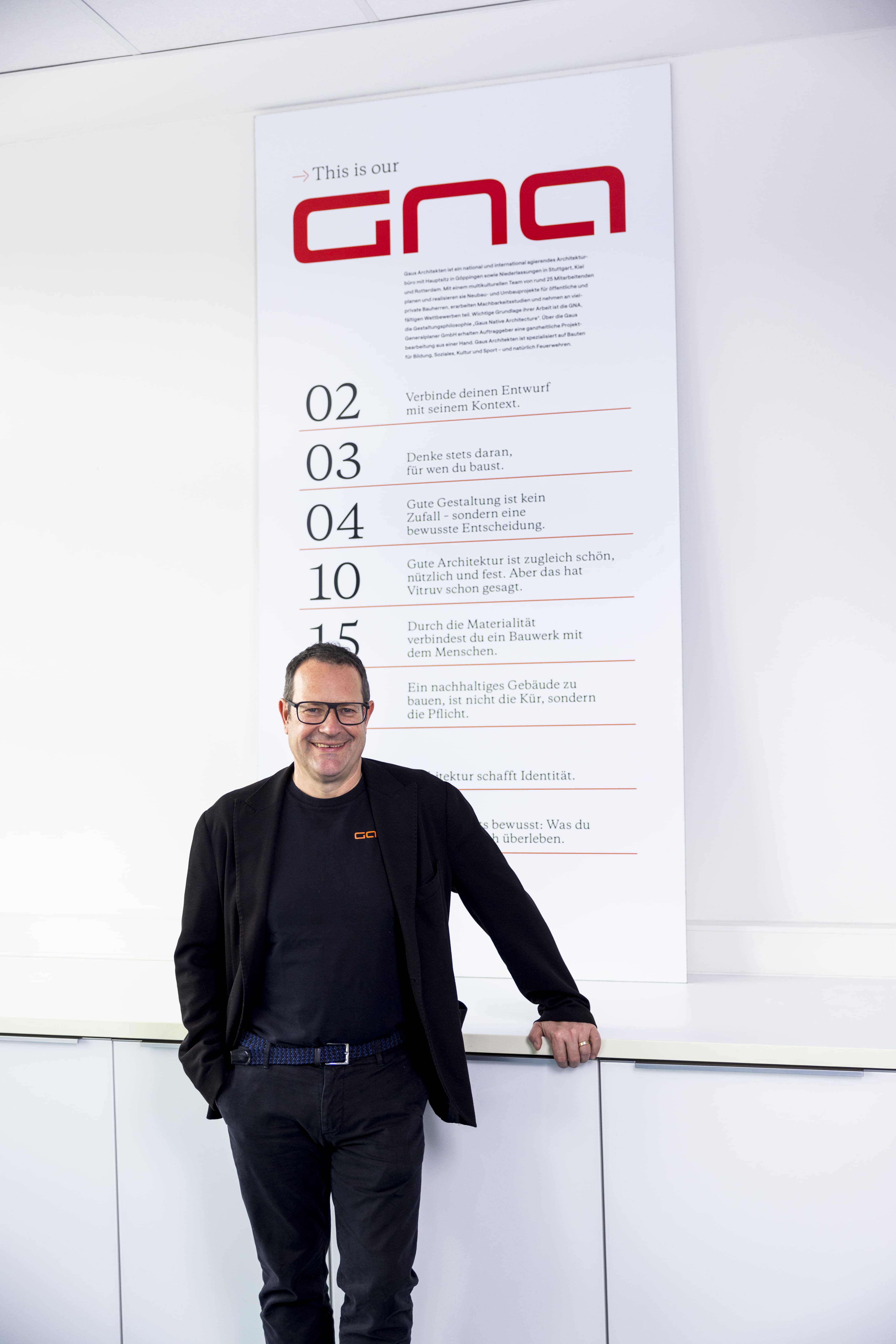
This is our

An important architectural theoretical basis for our daily work is the GNA, the "Gaus Native Architecture". It is an essential guide for us as designers of our built environment. It is also an expression of our attitude and aspiration towards the buildings we leave to users, society and future generations.

Good architecture for people
Architects who actively shape the environment must have a clear stance. After all, buildings are structures that ideally last for many generations and must therefore function for many years. We follow trends in architecture closely, and we are open to new technologies, developments and materials. Ultimately, however, we strive to create timeless buildings that offer people a good home today and in the future.
claim

The Gaus Native Architecture
In order to constantly sharpen the focus on this claim and to keep the overall social goals of architecture in view, we devote ourselves intensively to the question of a "good architecture". The theoretical examination of this meta-theme leads us again and again to important insights and ideas that flow directly into our work. The most important theoretical basis for architecture is the GNA, the "Gaus Native Architecture". This canon currently consists of 44 theses and describes our basic understanding of good architecture. The GNA is an important guideline for our work as planners in the sense of a valuable design of the built environment.
way

Professional exchange
An important part of our self-image is to carry this architectural mindset and the GNA into the Team and to discuss it there again and again. This constant discourse promotes the professional competence of the employees and keeps the design and craftsmanship quality of the buildings of Gaus Architekten at a high level. In addition, Christian Gaus gives lectures for experts and laymen about what makes good architecture, what makes the architecture of Gaus Architekten . In this way, we hope to make our personal contribution to the further development of building culture.
perspective


